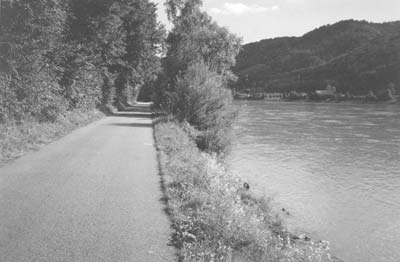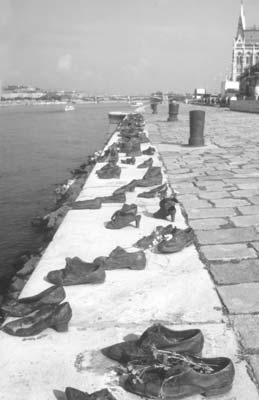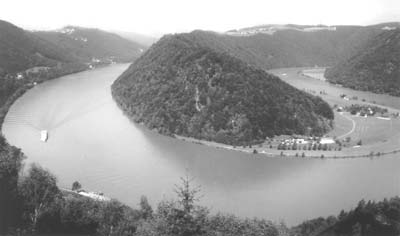Biking Germany, Austria and Hungary
I read about biking down the Danube in the March ’04 issue, phoned the writers for more info and began a 2-year planning effort. A friend asked to join me, and the two of us ended up having a very pleasant time for 2½ weeks in September ’06 biking along the Danube River from Passau, Germany, through Austria and into Hungary as far as Budapest.
Neither of us were bicyclers, so we had to get into shape. By the time we left the U.S. in late August, I could pedal steadily for two hours at about 12 mph, and that was the speed we generally made while along the river.
The total mileage from Passau to Budapest is about 415 miles, and each day’s journey was about 35 miles. We were tired at the end of each day but not worn out. Plus we usually found some reason to stop before pedaling for two hours: take a picture, visit a museum, have lunch, etc.
My friend and I met in Passau in front of St. Stephan’s Cathedral, home of the largest church organ in Europe, and enjoyed the noontime concert. We hiked up the steep hill to Veste Oberhaus, where we could overlook the confluence of three rivers: the Inn and the Ilz flowing into the Danube.
The next day began a 6-day ride to Vienna. Our main job each day was to enjoy the ride and the route to the night’s accommodation, which was reserved for us by the tour company and located near the bike path (in almost all cases less than a block or so away). We had asked for 3-star lodgings and separate rooms.
European experts advised us to make the trip in September so as to avoid crowds and enjoy the nice fall weather, so we decided on Sept. 1-16. They were correct. There was rain the day we arrived in Germany but none whatsoever afterward. We had very pleasant days.
Apparently, Central Europe had an extremely wet August, for everywhere we looked the land looked like spring — flowers and greenery everywhere. This route is one of the most popular in Europe, and we had hoped to find many Europeans biking with us, but we saw virtually none, probably because, for them, the vacation season had ended.
After three days in Vienna we hit the trail again, spending one more night in Austria before crossing into Slovakia for about four to five hours and then into Hungary. Our ride from Vienna to Budapest took six days, also.
Our cycling guidebooks, provided by the tour company, were surprisingly detailed. Often we had a choice of which side of the river to ride and where to cross: power dams, highway bridges or bike/people ferries, which were located appropriately. Only well into Hungary did we first use a vehicle ferry. Since we had so many options of things to see, my friend and I often rode separately; besides, he was a more powerful biker.
Our path was, in general, either “level” or on a slight downgrade. Because of the power dams along the river, levees often were present, with their tops being level, and the path was on top of them.
For me, my to-do list had three entries in Austria:
1) Schlogen Bend, where the Danube runs into a mountain range and reverses itself twice in just a few kilometers, plus the dramatic view of it from the mountaintop. We hiked to the spot in about 30 to 40 minutes after leaving our bikes at a nearby resort, Hotel Donauschlinge.
2) Mauthausen Concentration Camp, a few kilometers outside of the city of Mauthausen. In Austria there had been many labor camps, some concentration camps and other penal places such as work farms. This camp now includes a visitor center, bookstore and snack room. Virtually all of the original buildings remain except some of the prison barracks.
3) Melk Abbey, in the city of Melk. It is on the bike path and was mentioned as a suggested side trip in the guide.
I was on the south side of the river when I entered Slovakia, so had I chosen to visit Bratislava I would have had to cross the river via either of two bridges there, but I chose to remain on the south and wheel onward to Hungary.
On our fourth and fifth days in Hungary we encountered significant hills — up slowly and down fast! For some reason, the bike path diverged from the river, so we were inland where it was hilly. One of the participants who we encountered decided to ride in the shuttle van on the second of those two days. This was an option for those who needed it.
On the final day, I was biking with five folks from Australia. (My friend had gone on ahead.) They had been advised to take the riverboat the last hour or so upstream from Budapest instead of biking into the city through the heavy traffic to the hotel, so I decided to join them. We finally stopped riding at Szentendre Island, where we caught the ferryboat to downtown Budapest.
Suddenly the bike trip was over. The previous two weeks had been characterized by the river and the path beside it — the path often on top of a levy adjacent to the river but occasionally just a few meters alongside and a couple of meters above the water itself. It was always pleasant to return to the river after a detour for whatever reason.
The path itself was remarkable, at least to us from the U.S. It was 10 to 12 feet wide and asphalt, with its own signs and never the “sidewalk”; the sidewalk, if it existed, was separate. Often, especially in Austria, not only were we not next to a highway, we had no idea where the highway even was! And when not in a village or city, we could bike for perhaps an hour or two seeing nothing but forest or field, river and riverboats — no buildings or much of anything else.
In Hungary we often had to share the roadway. Usually, it was what we would consider a paved county road between villages. Occasionally, it would be what we would call a state highway, where the traffic was heavier and faster. The shoulders often were about 1½ to two feet wide, so there were times when I would simply pull over and off of the shoulder until a large vehicle passed me.
My 21-speed bike was wonderful to ride. Each bike had an odometer/speedometer, bell, tire pump, tool kit, wheel lock, two saddle bags (each containing about one gallon of volume) and a light, which I never used.
In my bags I carried extra clothes, snacks, water, camera and book. Behind the seat was a spring-loaded bracket under which I secured a bag containing a jacket and street shoes, which I wore when I was a “tourist.”
I could have selected a bike with a place to hold my guidebook — open in front of me — on the handlebar, but I was not familiar with such, so I declined it. For me, my cargo pants pocket was an ideal location for my guidebook.
When we arrived at our hotel in Budapest, it was evening. The next day the tour company had scheduled a city tour for everyone on the “tour,” about 12 of us. It was a quality city tour, which, unlike most, began right at our hotel, with no need for us to be picked up and taken to a central downtown meeting area to board the “real” tour bus.
That tour was the end of the scheduled bike tour from Passau. I elected to spend four more days there, then fly to Prague and spend five days there.
The tour company we used was Austria Radreisen (Joseph-Haydn-Str. 8, A 4780 Schärding, Austria; phone +43 [0] 7712 5511 0, fax 7712 4811 or visit www. radreisen.at).
It provided the bikes (7- or 21-speed), reserved accommodations, shuttled our luggage daily, provided guidebooks as well as directions to each accommodation plus a list of phone numbers if repairs were required, and collected our bikes in Budapest. I was most pleased with the entire tour.
The tour cost, including six days’ lodging on the way to Vienna, three days’ lodging in Vienna, six days’ lodging on the way to Budapest and an overnight there plus a city tour, was €1,407 ($1,877). Air was not included; I arranged that myself.
An option is to omit the Vienna-Budapest leg. A further option is to take the riverboat cruise from Vienna to Budapest.
I’m happy to respond to questions; call 605/347-6507 or e-mail gene1807@mailbug.com.
GENE McPHERSON
Sturgis, SD



